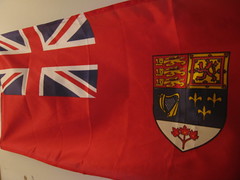| The Centre Block on Parliament Hill, containing the houses of the Canadian parliament (Photo credit: Wikipedia) |
Vancouver, April 2, 2013 — A new, more comprehensive guide and a new web tool to help newcomers settle and integrate in Canada were unveiled today by Citizenship, Immigration and Multiculturalism Minister Jason Kenney.
CIC’s new flagship publication, Welcome to Canada, is intended to be the official handbook to assist immigrants in preparing to come to Canada and to help them navigate their way during their first months in Canada.
“Our Government is committed to ensuring newcomers to Canada integrate and succeed in the Canadian economy and society as soon as possible,”said Minister Kenney, speaking at the MOSAIC settlement service centre.
“The new edition of Welcome to Canada shows our commitment to helping the citizens of tomorrow experience a smoother transition into their new community and into the Canadian workforce.”
Twice as long as the previous edition, the new guide’s content has been built on the foundation of academic research, in consultation with several federal partners and experts in the field of integration, and has been reviewed by new immigrants. The guide features practical information on many different topics including how to access language classes, basic information about Canada’s education system, laws and the justice system, the labour market and much more.
For the first time, the Welcome to Canada guide includes examples of immigrants to Canada who have successfully integrated. The guide was enriched by advice and anecdotes from Nick Noorani, himself an immigrant and an expert who specializes in immigrant integration and career outcomes.
“It is a huge honor and privilege for me to have had a chance to work on this publication,”said Mr. Noorani.
“Canada has given me more than I could ever have dreamed of and through my experiences I can help future immigrants succeed in Canada and this guide is a big part of that.”
This is the first time the Welcome to Canada guide has been revamped since it was first introduced in 1997. Like ourDiscover Canada citizenship study guide, Welcome to Canada is available in PDF or E-book format at cic.gc.ca/publications.
In addition, following the resounding success of the Come to Canada Wizard, the online immigration assessment and application tool, Minister Kenney today launched another interactive tool, this time intended for newcomers who have recently arrived in Canada.
The Living in Canada Tool produces a semi-customized settlement plan filled with tips, next steps, and useful links based on user responses to the initial questionnaire. Users can also find local immigrant-serving organizations with the integrated Find Services map, and can bring with them their customized settlement plan for additional, personalized support.
“To help newcomers integrate, the Government has tripled settlement funding since 2005-06 and remains committed to ensuring the distribution of settlement funding is fair, that immigrants receive the same level of service, regardless of where they choose to settle,”said Minister Kenney.
“The new Living in Canada web tool helps newcomers find and access language and settlement services quickly upon arrival.”
Follow us on Twitter (new window to unfollow or login):







